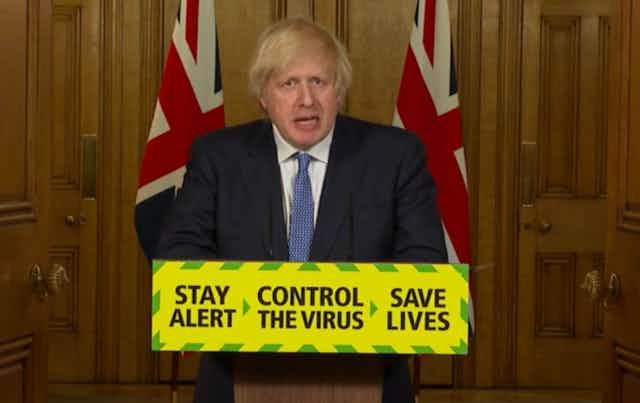Boris Johnson’s government is committed to introducing “a culture of transparency and openness”. At least, that’s what a government spokesperson said on July 3 when announcing that the regular Downing Street press briefings will become a daily fixture.
Who could be against “transparency and openness” – which must be doubly good since they both mean the same thing? The answer depends on trust.
If you believe the UK government when it says that the changes are being made in order to enable people “to hear directly what the government is doing and to see it being held to account” then this is unmitigated good news. But if you have the slightest degree of doubt about the government’s commitment to communicating openly and honestly, then there is good reason to be sceptical.
In the UK, the main forum for journalists to scrutinise the government has been through twice-daily, non-televised briefings, usually given by the prime minister’s press secretary, James Slack. The “lobby”, as this system is known, has long been controversial. Its critics claim that it encourages secrecy and creates a “cosy” relationship between political journalists and the political establishment. Its supporters claim it provides an unrivalled channel for scrutinising the government’s activities and pronouncements on a twice-daily basis.
What we do know is that whenever a government has sought to change the format of the briefings there has always been the suspicion that, despite claims that it was being done in the interests of “transparency”, it has always coincided with a time when the government was unhappy with the treatment it was getting at the hands of the media.
Blair’s press supremo, Alastair Campbell, made a number of moves to “open up the lobby” which were viewed as more about taking control than shedding light. And there have been similar moves under this government: earlier this year Johnson’s director of communications Lee Cain tried to prevent certain members of the lobby from attending a Downing Street briefing, but this was blocked by a walk-out by the “chosen few” journalists.

The government has also changed the location of the afternoon briefing from the lobby’s own meeting room in the Palace of Westminster to Downing Street itself. Although this sounds like an innocent enough move, it has disrupted the work of lobby journalists who need to be in and around parliament during the afternoon in order to meet newspaper and broadcast deadlines, rather than traipsing back and forth between parliament and Downing Street. Now it is intended that this daily briefing should be televised.
Selective spin
On the face of it, opening up the afternoon briefing should be welcomed – why not let the daylight in on these private conclaves between the politicians and the journalists? Hasn’t it worked pretty well during the lockdown?
The answer is no it hasn’t. Televising briefings have given the appearance of transparency, while in fact concealing as much as it revealed – if the frequent criticism of misleading information having been given about ventilators, care homes, PPE, testing and test and trace are any indication. This is not about the way information has been spun (as it has) but about the actual format of the briefings.
Read more: Coronavirus: as the UK faces more restrictions, the public needs clearer government information
At COVID-19 briefings Downing Street was able to pick and choose who to invite, in what order to speak, whether they would be allowed a follow-up question and when the briefings should end. This degree of control seriously limits the ability of journalists to continue their questioning. In the briefings as they are currently the lobby can be at its best, acting like a pack, following up each other’s questions and working as a team – without time limits.
This didn’t happen in the televised briefings. As each journalist was called upon to recite their questions it was extremely rare, if ever, to see one following up a colleague’s question that had not been satisfactorily answered. Perhaps the best – or the worst – example came during the Dominic Cummings “Rose Garden press conference” when he offered the literally incredible excuse for driving from his temporary home in Durham to Barnard Castle 30 miles away: that he was “testing his eyesight” to see if he was fit to drive to London.
Because the journalists knew they had only one prepared question and maybe a follow-up, no one said: “Do me a favour, are you seriously expecting us to believe that?”
Another problem with the COVID-19 briefings was that broadcasters were always given the first few questions. This is because the briefings took place at 5pm and most had deadlines to meet for their news bulletins at six o'clock. This meant that, for the most part, their TV packages were already “oven-ready” (to coin a phrase) and once they had got a quote to add the finishing touch to their package, they were off.
So, even if the COVID-19 briefings were sufficient at conveying limited information, they worked less well as a means of holding the government to account. No wonder then that Downing Street is so keen to reintroduce them as a daily feature. “Transparency”? Perhaps not.

